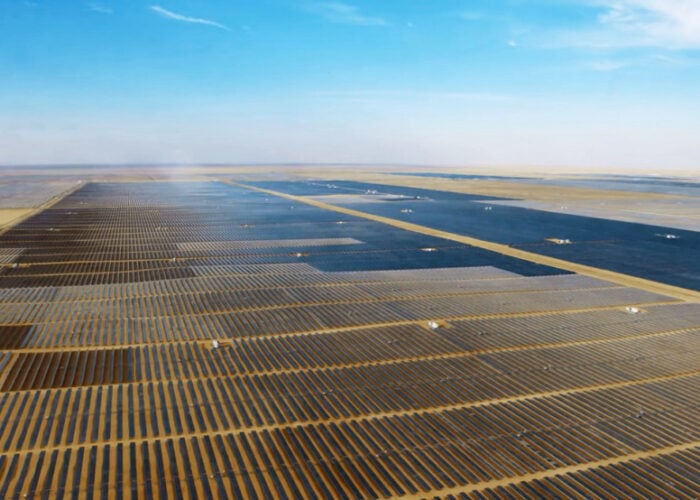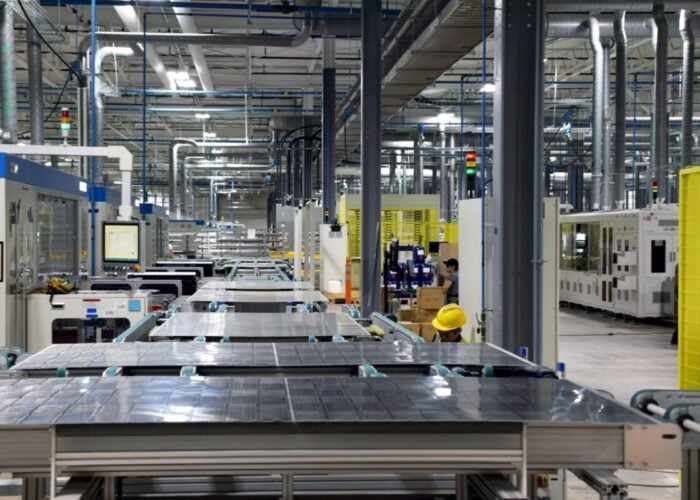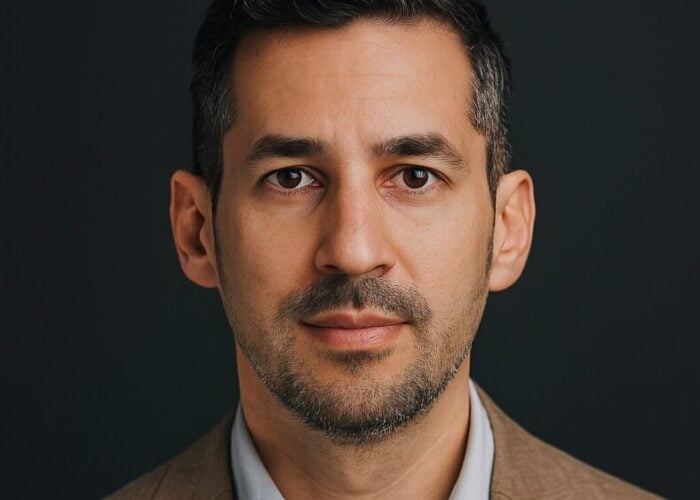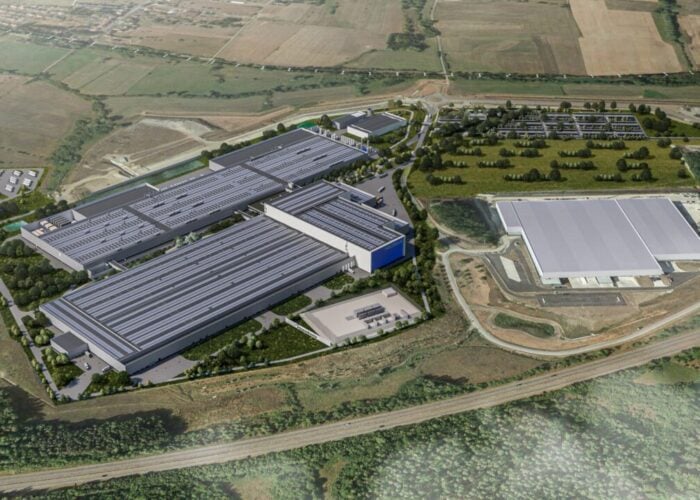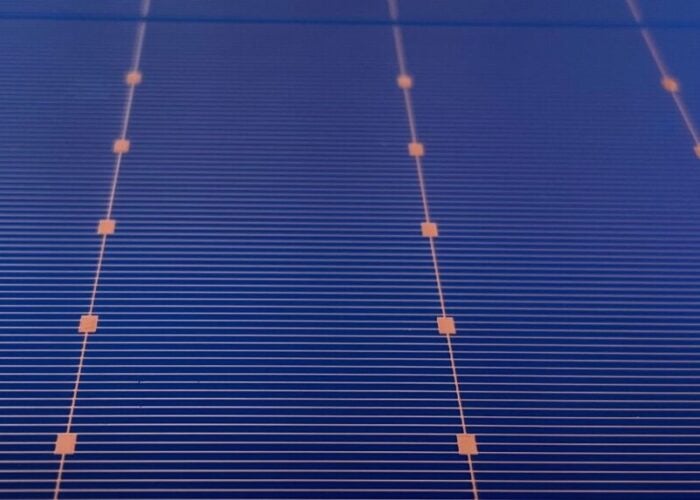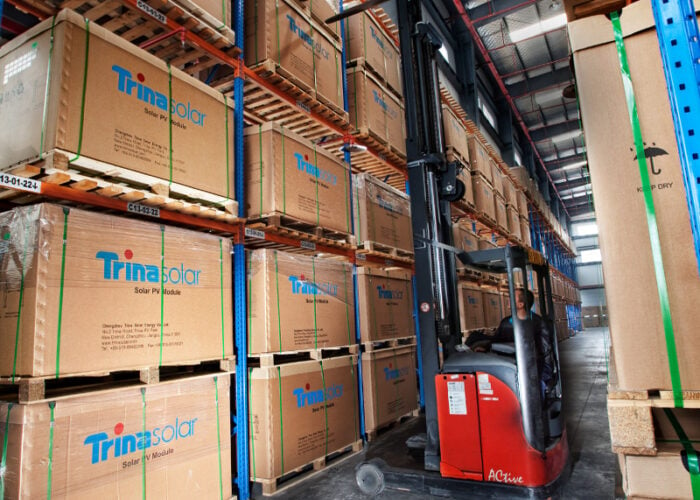
PV CellTech 2020 is taking place online this year, with 27 invited keynote presentations from the leading PV technology stakeholders, during 27-29 October 2020. The scope of the 9 sessions across the 3 days of the online event have been configured to allow the global PV community to assess fully the plethora of new-capacity and new-technology announcements from the past 12-18 months.
This article discusses the topics to be covered during the event, introduces the companies and speakers, and lists some of the key themes that will be discussed and explored in detail – in particular, the issues that are causing uncertainty when looking at capacity levels and technology choices in mass production during 2021 and beyond.
Try Premium for just $1
- Full premium access for the first month at only $1
- Converts to an annual rate after 30 days unless cancelled
- Cancel anytime during the trial period
Premium Benefits
- Expert industry analysis and interviews
- Digital access to PV Tech Power journal
- Exclusive event discounts
Or get the full Premium subscription right away
Or continue reading this article for free
What’s new for PV CellTech 2020?
With on-site globally-attended events not possible during 2020, there is in fact a greater need for many – in particular outside China across the value-chain – to understand where PV technology is going during the next couple of years.
Announcement-after-announcement has been forthcoming from dozens of Chinese cell and module makers during 2019 and 2020, with the scale and detail of these plans almost making 10-GW-plus fabs the norm, when it comes to new capacity additions.
Moreover, the multi-GWs of proposals relating to non-mainstream technology variants (especially n-type TOPCon and heterojunction) has been somewhat bewildering to many. Are these plans real? How can we split out the companies already running n-type lines and those making announcements simply to be seen as technology savvy?
Therefore, whether in-person or online, we set one of the challenges for PV CellTech 2020 to get answers to the n-type capacity plans and aspirations; not simply in China, but across Southeast Asia, Europe and other global regions.
As such, 4 of the 9 sessions of PV CellTech 2020 Online are devoted to n-type TOPCon and heterojunction technologies, featuring market-leaders such as Jolywood, Jinergy, Panasonic, Hevel, Risen, REC Group and JA Solar. Many other companies however will be discussing n-type expansion plans, such as Meyer Burger, Violet Power and Trina Solar, within the context of their company presentations.
Of the remaining 5 sessions, 3 are specific to the more pressing question of technologies and cell/module specifications ‘beyond mainstream PERC’. This part of PV CellTech 2020 Online is essential, with 90%-plus of modules shipped using cells made with p-mono PERC today. How far can p-mono PERC still go, in terms of cell efficiency and processing cost?
The final two sessions are special ones. First, at the end of Day 2 (28 October 2020), we will look in detail at companies and technologies with unique value-added technologies targeted specifically at the European and US end-markets.
And finally, the entire event will conclude with our customary PV Technology Roadmap session, where different perspectives of this are presented. From the research institute, UNSW; the view from the leading module supplier of recent years, JinkoSolar; and lastly, the findings of the latest ITRPV Roadmap.
Special features of the 2020 Online PV CellTech edition
PV CellTech is now in its fifth year, with the first event taking place back in 2016. During this time, it has been a special treat to see the event gain in traction each year, and so many people acknowledging this as the leading technology/manufacturing event of the year. The buzz in Penang each March for the past few years has been unmissable.
However, the most frequent feedback I have received in the past 5 years has been along the lines of: I only wish I could have been there!
Therefore, somewhat by default, PV CellTech 2020 will be the first time that, by virtue of being online, we can bring the conference to a global audience. It is expected many of the attendees will be experiencing the event for the first time this year.
Therefore, with this in mind, we have made some key changes to the overall event layout. For starters, the sessions are spread over 3 days, and across various time zones each day that allow for strong participation from Asia, Europe and the US in particular.
This has allowed us to increase the number of invited keynote talks to 27. Moreover, panel discussions (almost invariably of less quality and value compared to CTO talks) are removed from the online edition. In place, a new feature has been inserted allowing for 10 mins Q&A discussion between myself (as the moderator of the entire event) and each individual speaker. Coming after each of the 20-minute presentations, this part of the event may well be a highlight of PV CellTech this year, with discussions between myself and all the companies/institutes likely offering some major findings ‘behind’ the corporate plans or GW-heavy expansion numbers.
Therefore, PV CellTech 2020 Online is hopefully going to be something pretty special this year!
What questions is PV CellTech 2020 Online seeking to answer?
With the pandemic-driven hiatus imposed on our scheduling of PV CellTech this year, it is now more than 18 months since the last (in-person) event in Penang back in March 2019. What a long time that is, when it comes to PV technology, capacity investments and roadmap adjustments!
Everyone will likely bring a different subset of must-answer questions to the PV CellTech forum this year, but some of my personal ones include the following:
• How real are the 200-GW-plus of new expansion plans announced in China over the past year?
• Which companies have succeeded in breaking the GW-barrier in terms of annual n-type cell production, and which ones will be added to this grouping during 2021 and 2022?
• What are the barriers in moving n-type options to the 5-10 GW per company level?
• What production equipment and materials are needed to run n-type lines with high throughput, low cost, high efficiency, and high utilization rates?
• Specifically on p-type PERC, are the 10-GW-plus leading players going to stick to this as their mainstream offering for the next few years, and choose instead to make improvements through larger wafer sizes and module formats?
• How is cell manufacturing in general adapting to different wafer size variants from 166mm to 210mm? Is there any consensus to wafer dimensions for cell manufacturing emerging in 2021?
• Is there a timeline for tandem cells and perovskites, and will the move from some of the market-leaders away from p-mono PERC bypass some of the n-type investments of today and move straight to these high efficiency variants? What would it take for this to happen?
• What is the status of GW-level cell/module producers outside China, and is 2021 going to see a new wave of production level increases in Europe and the US? Is this going to be a catalyst in revitalizing the research communities in these regions that were behind PV’s original transition from R&D to mass production?
• What does all this mean for rooftop installers, EPCs and utility-scale investors/developers in 2021? How should rooftop installations and ground-mount solar farms be designed? What is the scope of increasing long-term returns?
The last point here is perhaps the key one for PV CellTech 2020 Online, with an audience expected to have more downstream participants than the in-person Penang events of the past. It is perhaps this audience – especially those players in Europe and US – that have been most deprived of updates during 2020 in the absence of face-to-face meetings and being able to travel to China or Munich for major trade exhibitions.
Why do wafer sizes matter? Should sites for 2021 and 2022 be designed based on n-type modules? And if we go one step further, how much of module supply is going to come from China, Vietnam, South Korea, other countries in Southeast Asia, or GW-status players with capacity in Europe or the US?
A closer look at the agenda and the speaker line-up
Full details of the PV CellTech 2020 Online agenda can be found at the event website here. Below is a top-level overview showing all the sessions companies/institutes speaking over the 3 days (27-29 October 2020).
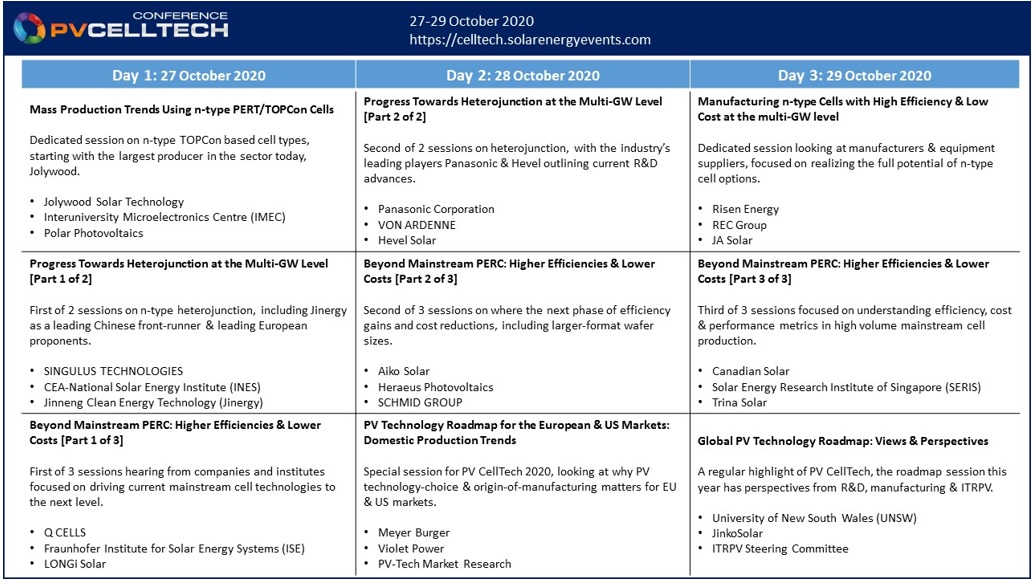
Now, let’s have a look at the companies and research institutes speaking at the event. Here, I have tried to split them into different ‘groupings’ to illustrate how we have gathered the voices that matter at PV CellTech when seeking to explain what is really happening with PV technology in mass production.
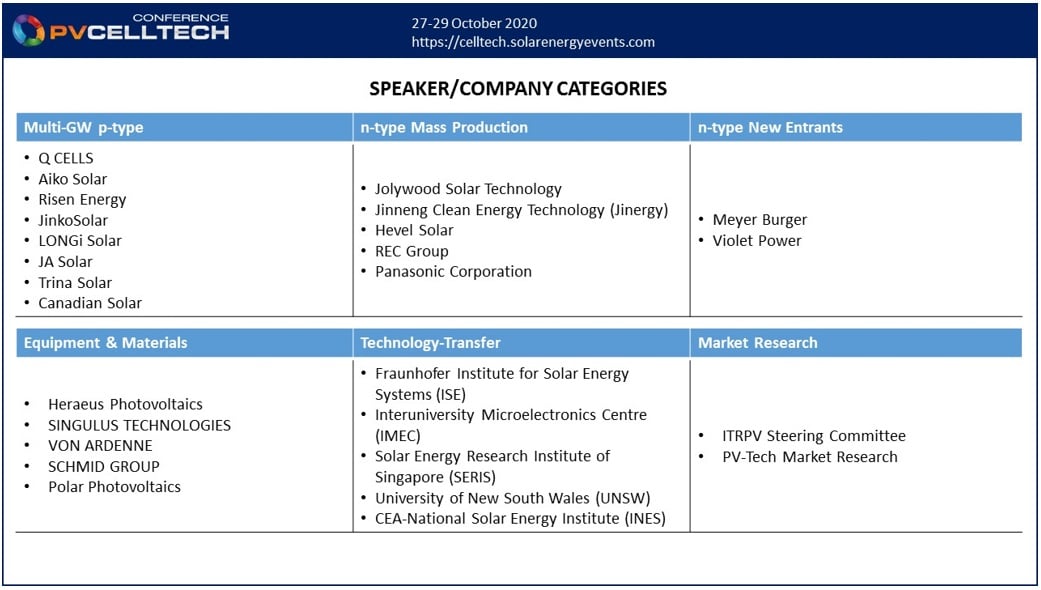
Registering to attend PV CellTech 2020 Online
The event takes place online during 27-29 October 2020. Details on how to register to attend the event can be found by following the link here.

